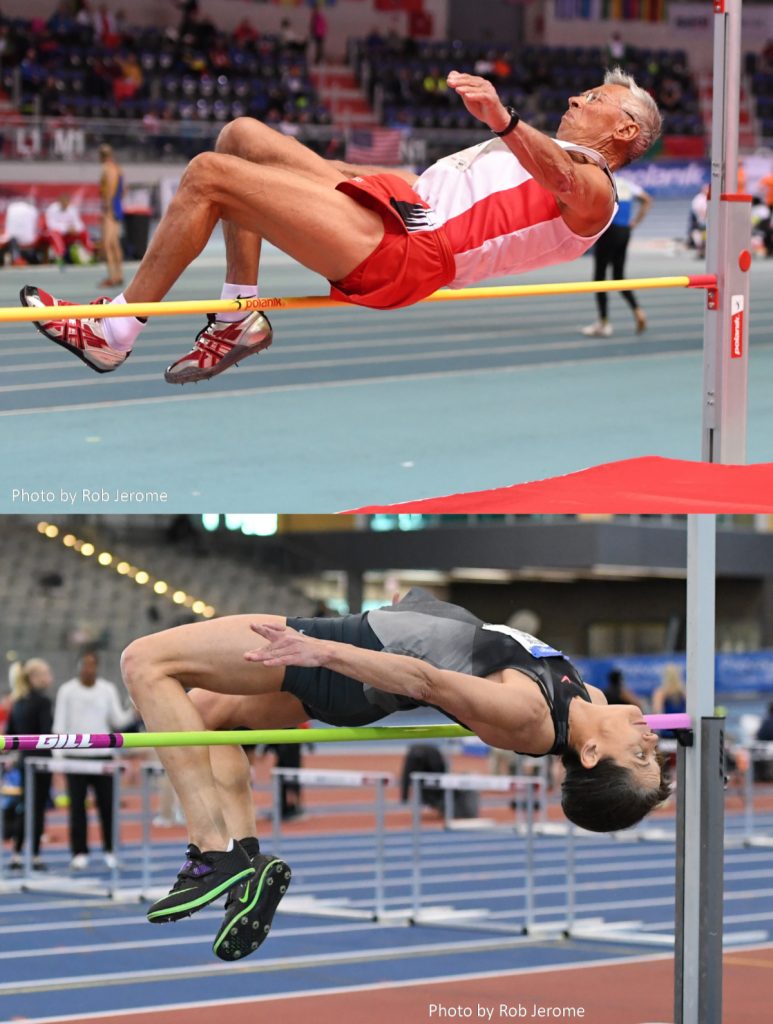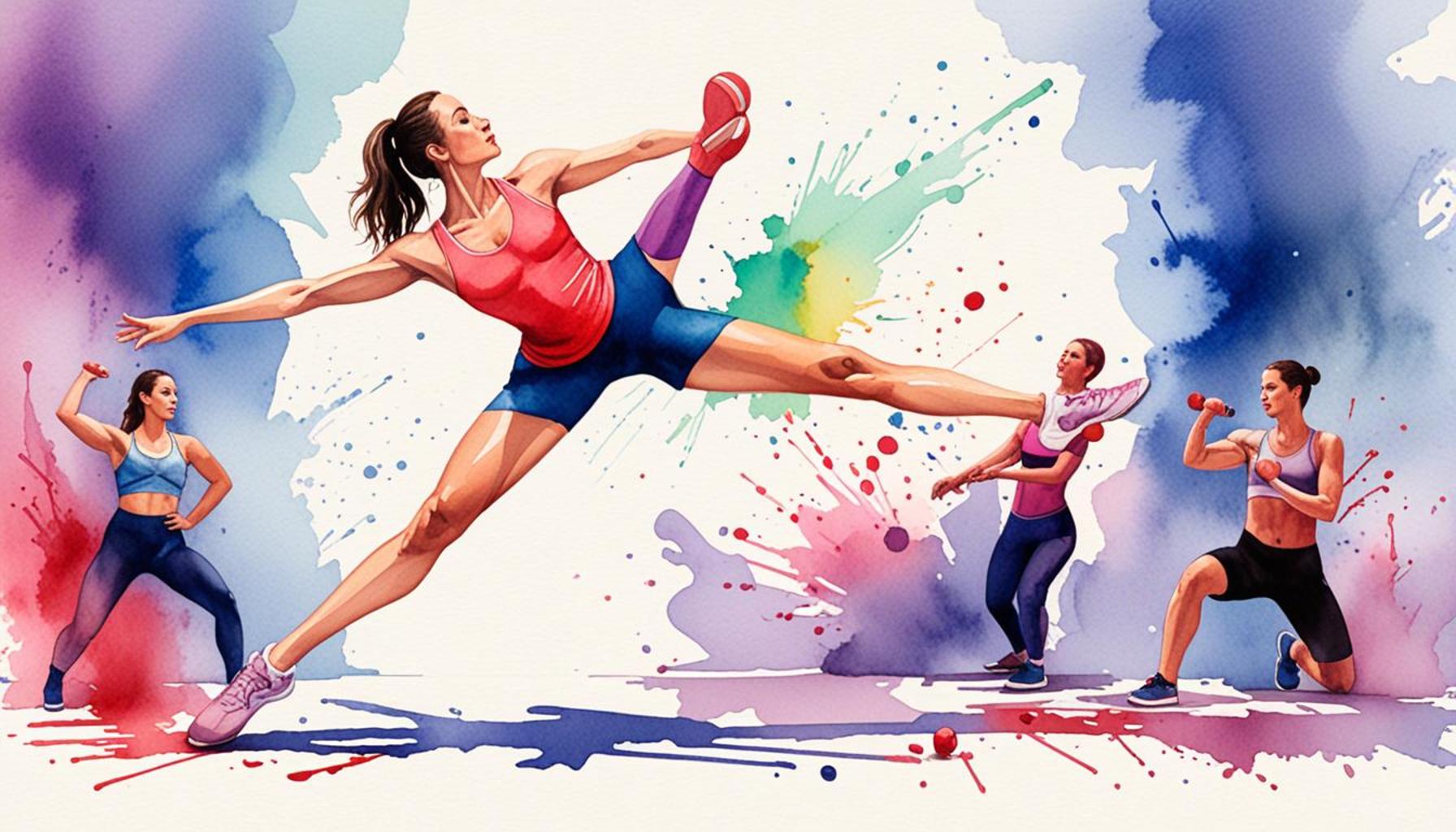Sports and Creative Writing: Inspiring Narratives of Athletes and Their Journeys

Exploring the Depths of Athletic Narratives
Victories in sports are often celebrated with exuberance, but the true allure lies in the journeys athletes embark upon to achieve those victories. Each athlete’s path is a tapestry woven with threads of challenges, persistent efforts, and ultimate triumphs. Through the lens of creative writing, these personal stories unfold, granting insight into the lives and mental landscapes of competitors who dedicate themselves to their craft.
- Michael Jordan: Perhaps one of the most legendary figures in sports, Jordan’s story is not just about his incredible skill on the basketball court but also about overcoming personal hurdles. His early struggles in high school, where he was famously cut from the varsity team, and his relentless work ethic shaped not only his career but also revolutionized the culture of basketball globally.
- Serena Williams: A powerhouse in women’s tennis, Serena Williams has not only dominated the sport with her record-setting titles but has also used her platform to advocate for equality and women’s rights. Her narrative encompasses the fight against sexism and racism in sports, demonstrating that her influence goes far beyond the court.
- Steve Young: The story of Young’s evolution from a backup quarterback to a Hall of Fame NFL star illustrates resilience in the face of adversity. Initially, he faced skepticism and pressure following the legendary Joe Montana. Yet, Young transformed his setbacks into motivation, ultimately leading the San Francisco 49ers to victory in Super Bowl XXIX.
These athletes excel not only in their sports but also through the narratives they share, which resonate deeply with fans and aspiring athletes alike. As these stories unfold through creative writing, they empower and inspire individuals by revealing the grit and determination necessary for success. They serve as profound reminders of ambition, dedication, and the enduring human spirit.
Examining the intersection of sports and creative writing unveils an array of themes that extend beyond personal achievement, such as the impact of societal change, the pursuit of equality, and the importance of mental fortitude. Through the art of storytelling, audiences are able to engage with the athletes on a more personal level. This connection fosters a deeper appreciation for both the sport itself and the athletes who inspire millions.
In our exploration, we will delve into how these multilayered tales not only captivate audiences but also catalyze conversations around broader themes, encouraging readers to reflect on their own life journeys and aspirations.
DIVE DEEPER: Click here to discover more

The Power of Personal Stories in Sports
As we dive into the world of athletic narratives, it becomes clear that these stories encapsulate far more than just the thrill of competition. Each athlete’s journey serves as a microcosm of perseverance, shaped not only by physical challenges but by emotional and societal factors as well. The arena of creative writing allows these compelling stories to emerge, providing context and depth that traditional sports reporting often overlooks.
One of the most significant elements of these narratives is the role of mental fortitude. High-level athletes frequently encounter psychological battles that parallel their physical pursuits. Consider the journey of Simone Biles, a gymnast who faced immense pressure during the Tokyo 2020 Olympics. After prioritizing her mental wellbeing, Biles withdrew from several events to focus on her health, igniting a conversation about mental health in sports. Her decision wasn’t merely a personal one; it sparked a broader dialogue about the pressures young athletes face and the importance of emotional resilience.
Moreover, the stories behind athletes’ successes often illuminate themes of social responsibility. For instance, Colin Kaepernick used his platform as an NFL quarterback to raise awareness about racial injustice and police brutality. His approach generated significant controversy, but also paved the way for future athletes to utilize their visibility to advocate for societal change. Kaepernick’s narrative prompts audiences to reflect on the responsibilities athletes bear as public figures and the potential they have to effect change.
In examining these powerful narratives, we can identify several recurring themes that captivate audiences:
- Overcoming Adversity: Every athlete faces external and internal challenges. Whether it’s injury, personal loss, or systemic obstacles, these experiences shape their journeys.
- Community and Support: An athlete’s success often hinges on the support of coaches, family, and fans. These relationships are integral to the narrative, highlighting the importance of teamwork beyond the field.
- Legacy and Influence: Many athletes strive to leave a meaningful legacy. Their stories influence not only their respective sports but also inspire future generations of athletes to pursue their dreams.
The intersection of sports and creative writing allows for a rich exploration of the human condition. Athletes’ tales of triumph and failure resonate deeply with fans, creating a sense of empathy and connection that transcends the game. These stories encourage spectators to not only celebrate athletic prowess but to also engage with the emotional and moral complexities present in these journeys. The insights gained from their narratives can empower individuals to confront their own challenges, making sports a source of inspiration that extends beyond the scoreboard.
| Category | Details |
|---|---|
| Athlete Backstories | Delving into the challenges and victories of athletes provides context and depth to their journeys. |
| Inspiring Journeys | Highlighting how perseverance, dedication, and creativity play pivotal roles in their success. |
The realm of sports is rich with stories that captivate and inspire. Each athlete’s journey not only showcases their athletic proficiency but also reveals the deeper narratives that fuel their passion. Creative writing can amplify these narratives, transforming data and statistics into compelling tales of human fortitude. Consider how detailing the struggles faced by athletes, such as injuries, setbacks, and personal obstacles, creates a connection with audiences. It allows fans to engage empathetically with the backgrounds of their heroes. This connection can be further enriched through narrative techniques like vivid imagery, sensory details, and emotional highlights that bring their experiences to life.Moreover, illuminating the role of support systems—coaches, family, and communities—emphasizes that achievements are often collective victories. A well-crafted narrative doesn’t only serve to inform; it inspires audiences to reflect on their own challenges and aspirations, creating a ripple effect of motivation that extends beyond the confines of the sports arena.
DISCOVER MORE: Click here to dive deeper
Empathy through Athletic Journeys
In exploring the intricate relationship between sports and creative writing, it’s essential to highlight how these narratives foster empathy among audiences. When readers engage with the life stories of athletes, they gain insight into the myriad emotional and psychological hurdles these individuals face. This empathy, in turn, humanizes the athlete beyond their public persona, revealing the multifaceted nature of their existence.
Take the story of Kevin Love, an NBA player who openly discussed his struggles with anxiety and depression. Following a panic attack during a game in 2018, Love penned an article detailing his experiences with mental health. This candid revelation encouraged many of his fans and fellow athletes to share their own struggles, breaking the silence surrounding mental health issues in sports. Through Love’s narrative, the public not only learned of his courageous battle but also recognized the need for broader acceptance of mental health discussions within athletic communities.
Such narratives also bridge the gap between athletes and fans, allowing for a deeper connection. Consider the many athletes using social media platforms to share their journey—providing updates on training, their mental states, or the impact of personal challenges. This accessibility offers fans a unique opportunity to witness the athlete’s journey in real-time, creating a sense of community and shared experience that transcends traditional fanfare.
Incorporating Cultural Heritage
Another compelling aspect of athlete narratives is how they can incorporate elements of cultural heritage. For many athletes, their journey to success is deeply intertwined with their backgrounds, values, and traditions. An exemplary case is Serena Williams, whose achievements on and off the court have become emblematic of resilience in the face of racial and gender disparities. Her autobiography, “On the Line,” delves into her upbringing in Compton, California, and how her family’s struggle against adversity has shaped her as an athlete and a woman of color advocating for equity.
Moreover, cultural influences can also extend beyond individual stories to reflect broader societal narratives. The success of international athletes in American sports leagues offers insights into global connectivity and the increasingly diverse nature of athletic competition. For example, athletes like Giannis Antetokounmpo, who faced tremendous challenges as a young immigrant in Greece, illustrate how sports can serve as a platform for multicultural representation while inspiring fans worldwide.
Documentaries and Narrative Nonfiction
The realm of documentaries and narrative nonfiction has become an essential medium for exploring these athletic journeys in detail. High-profile documentaries such as “The Last Dance,” chronicling Michael Jordan and the Chicago Bulls’ rise, have not only captivated audiences but also contributed to sports literature by offering a narrative structure capable of diving deeper than traditional tellings. By weaving interviews, archival footage, and intimate moments, filmmakers create an immersive experience that reveals the complexity of athletes’ lives.
Furthermore, books like “Life in Motion: An Unlikely Ballerina” by Misty Copeland have gained significant acclaim for their introspective narratives. Copeland’s journey from a challenging childhood to becoming the first African American principal dancer at the American Ballet Theatre embodies the essence of creative writing in athletics—transforming personal trials into empowering stories that resonate universally.
In the realm of sports and creative writing, the intersection of personal experiences, emotional resilience, and social advocacy becomes a powerful tapestry. These narratives shape not only how we view sports but also provide a lens through which we can examine the intricacies of the human experience as it relates directly to dedication, struggle, and triumph.
DIVE DEEPER: Click here to discover how dance can ignite your creativity
Conclusion: The Power of Athlete Narratives
The profound connection between sports and creative writing transcends mere statistics and game scores; it intertwines the human experience with tales of resilience, determination, and personal growth. Through the stories of athletes like Kevin Love and Serena Williams, we witness the transformative impact that vulnerability can have—not just on the individual, but on society as a whole. These narratives encourage open dialogues around mental health, social justice, and cultural heritage, inviting readers and fans to engage with athletes on a deeper level.
As athletes harness platforms like social media and documentary filmmaking, they provide unprecedented access to their journeys, allowing fans to share in their triumphs and tribulations. This growing emphasis on storytelling enriches the sports landscape, making it more relatable and reflective of our own struggles and aspirations. The use of narrative nonfiction and personal memoirs transforms athletic achievements into compelling stories that resonate widely, illustrating that sports are not simply about competition but also about the shared narrative of the human spirit.
By exploring these inspiring stories, audiences are reminded that behind every score is a multi-faceted individual whose journey merits attention and empathy. Ultimately, the fusion of sports and creative writing creates an enduring legacy—a testament to how athletes can inspire a sense of community, foster understanding, and ignite change through the power of their voices. As we continue to celebrate these narratives, we encourage readers to delve deeper into the stories of athletes, uncovering lessons that extend far beyond the playing field.


